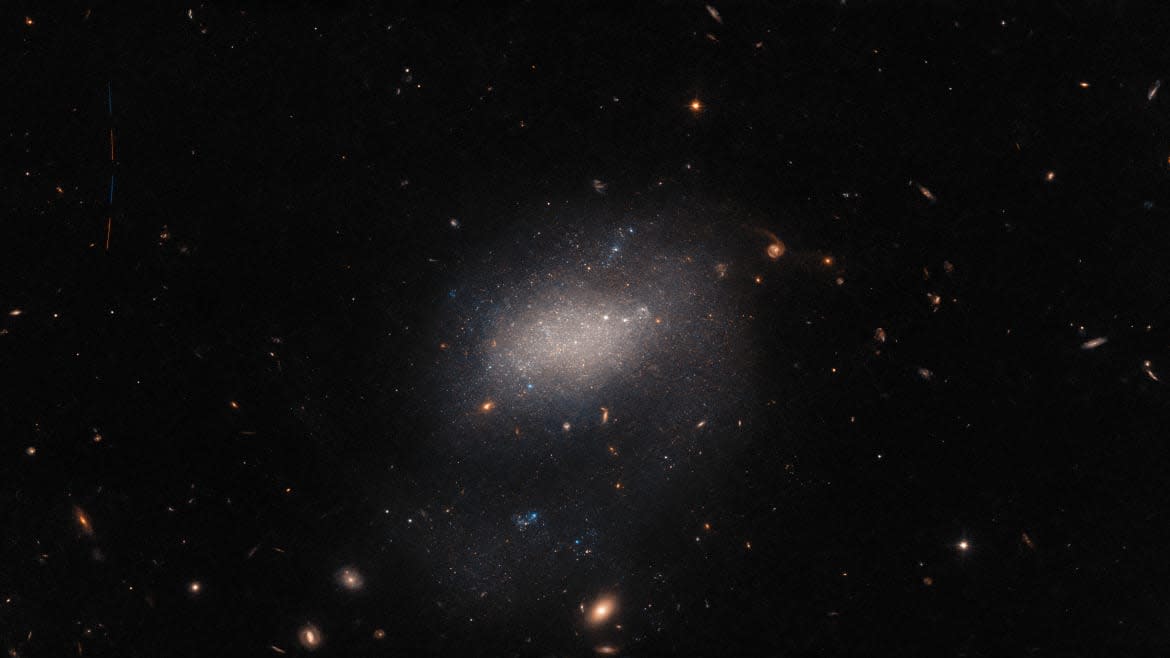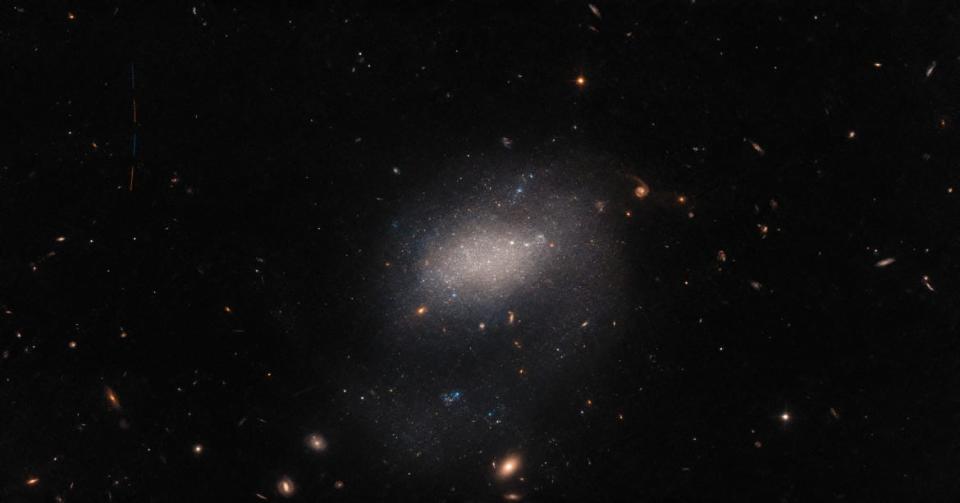Can You Spot the Surprise Photobomb in this Hubble Space Telescope Pic?

While the James Webb Space Telescope has been getting a lot of love and attention lately (and for good reason), it’s easy to forget that the stalwart Hubble is still alive and kicking—mostly. In fact, the aging telescope—now in its 32nd year—is still doling out spectacular new images of deep space and its latest came with a surprise of its own.
NASA and its partners at the European Space Agency released this stunning image of what they fittingly dubbed a “cosmic treasure trove.” It reveals a copious amount of spiral and elliptical galaxies, along with twinkling foreground stars closer to the Earth. A bright, star-filled galaxy dubbed UGC 7983 floats in the middle, and is supposed to be like some of the earliest galaxies formed in the universe, according to an ESA blog post.
However, there’s also something a bit surprising on closer look: an asteroid streaking through the image in the upper left side appearing as four streaks of light—which, by all accounts, was completely unintentional. The happy accident occurred due to the fact that the image is a composite made of four different pictures taken by Hubble’s Advanced Camera for Surveys.

An asteroid streaks through the image in the upper left side appearing as four streaks of light
While stunning, the image is actually a part of one of Hubble's projects to capture every known galaxy near the Milky Way. To date, the orbital telescope has captured 75 percent of the galaxies and is spending what little time it has left in order to get the last quarter.
Hubble has been falling back to terra firma since its last service mission in 2009. Luckily, NASA and SpaceX have planned a study in order to look into the viability of pushing the telescope back into its original orbit. The agency believes that this could help extend its operational lifespan by an additional 15 to 20 years.
In all, it’s a great reminder of how the aging telescope can still deliver intriguing scientific discoveries across the cosmos—and some captivating pictures along the way.
Got a tip? Send it to The Daily Beast here
Get the Daily Beast's biggest scoops and scandals delivered right to your inbox. Sign up now.
Stay informed and gain unlimited access to the Daily Beast's unmatched reporting. Subscribe now.


